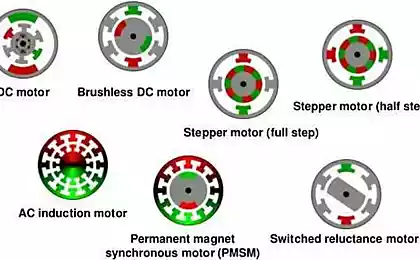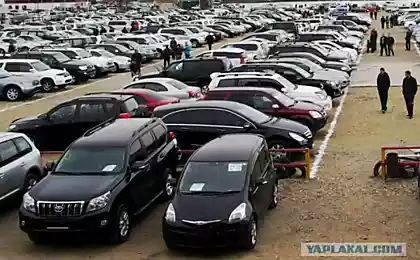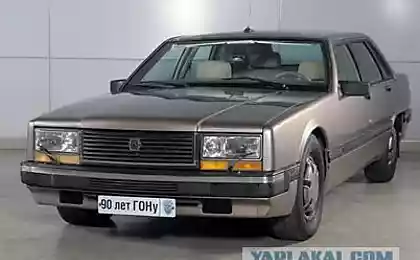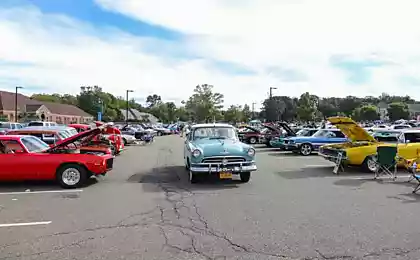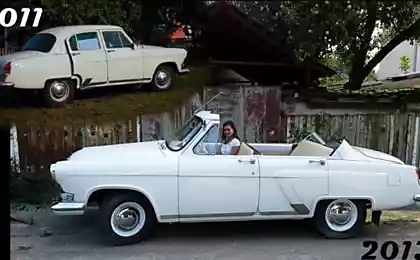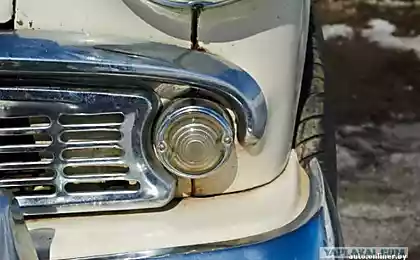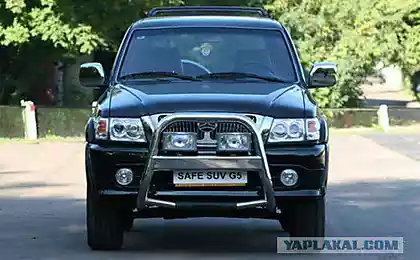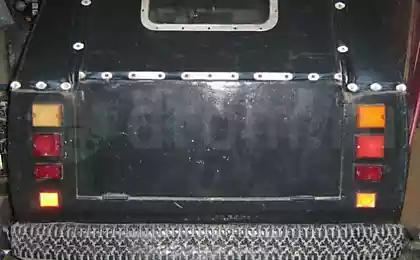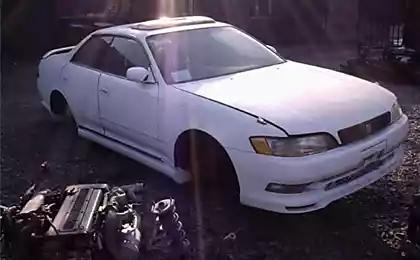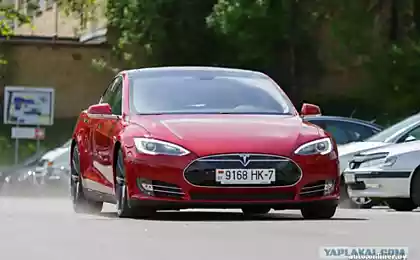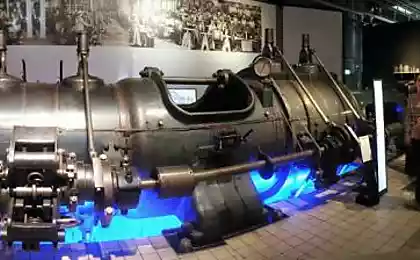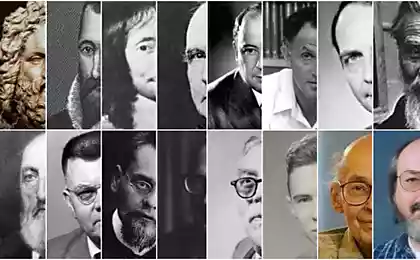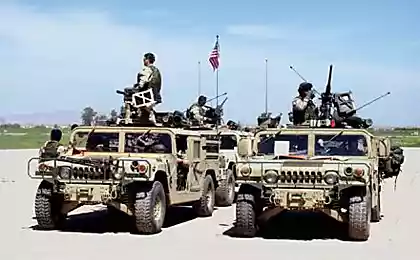1289
My favorite car childhood
Remembered here recently the subject of buses lyase and immediately remembered what the same car was loved in my childhood, so I present to you ZIL 130 on this car I was with my father reeled than one thousand kilometers. Decided to see anything else produced by the plant ZIL in its history, and now represent on your court brief history of the plant. We start from afar
pysy lope will bukaf and pictures do not know why I finish unsubscribe
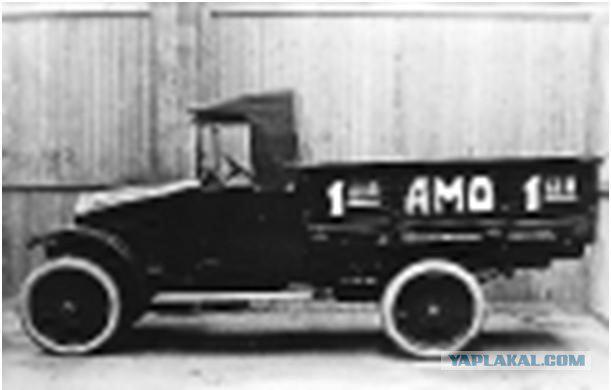
August 2 (July 20, old style) 1916 in Tyufelevoy Grove held a solemn prayer and laying Automobile Plant (AMO), which in March 1917 was to release 150 half tons lorries "F-15" under the license of Italian company "Fiat" . Plant based trading house "Kuznetsov Ryabushinskys and K". The difficulties of wartime and weakness lathe instrumental bases of the country foiled the plans of construction of the plant on schedule. However, Ryabushinskys purchased in Italy complete sets of cars "F-15", which provided the assembly of 432 trucks in 1917, 779 - in 1918 and 108 cars - in 1919. However, the factory for the manufacture and assembly of own cars completed was not. The reason for that became the October Revolution and the Civil War. The nationalization of the unfinished plant (August 15, 1918) recorded the expropriation of the property of AMO shareholders. The unfinished enterprise essentially turned into a large workshops where cars and other equipment.
April 30, 1923 AMO was named after Italian communist Ferrero, killed by fascists. In June 1923 the State Planning Committee of the USSR approved the production target plant for 1923 - 1927. However, in March 1924, the plant received a specific governmental task for manufacturing of the first Soviet truck.
November 1, 1924 was assembled the first half tons lorries AMO-F-15, and 7noyabrya ten cars took part in the parade. This date is considered the birthday of the Soviet automobile industry.
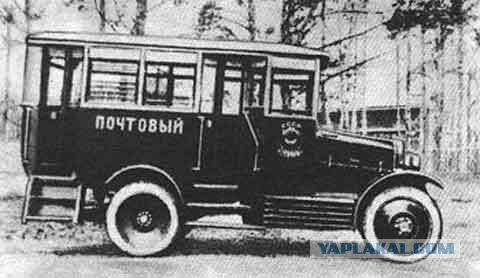
I note that the equipment for the manufacture of high-grade car almost was not therefore in the production of the first Soviet car had quite perverted. Many of the operations performed manually repair technology. For example, the first drilled in a steel plate and chisel cut down something like the crankshaft, and then with the big tricks to grind the workpiece on a lathe, turning it into a finished product.
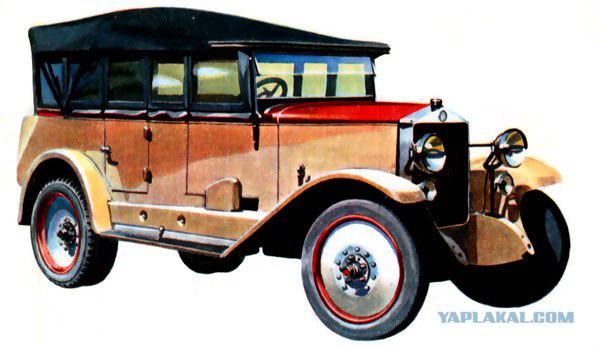
As seen from the images, based on the AMO-F-15 was based a lot of cars with a base experimented been here such options such
AMO-F15 - PT-10

and even here are
AMO-F15 - PT-12
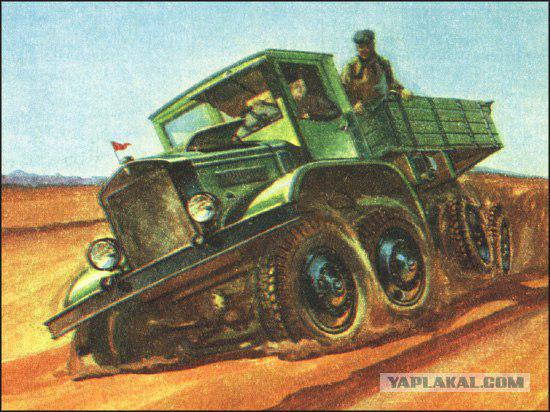
also on the basis of this car produced armored car BA-27
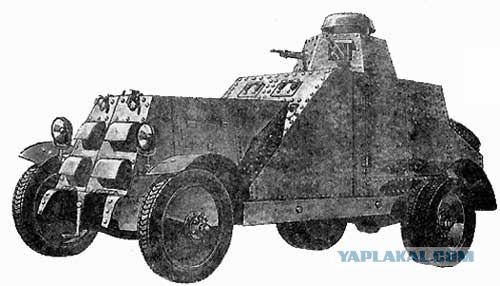
In 1925 the plant was renamed the 1 st State Automobile Plant (the former AMO).
At the beginning of 1927. Avtotrest, who reports to the plant, decided to reconstruct the plant. The object of the production truck was selected the American car assembling firm "Autocar" carrying capacity of 2, 5 m. This planned mass production of trucks in a pipelined manner.
This is the first domestic car with hydraulic brakes, diaphragm petrol pump, battery and ignition system driven by the transmission pump to inflate tires.
AMS-2 was the same type with the American truck "Autocar-5A", and before the end of 1931, it used a number of imported components and assemblies.
In 1927 the plant was headed I.A.Lihachev, whose name is associated with the intensive development of the company.
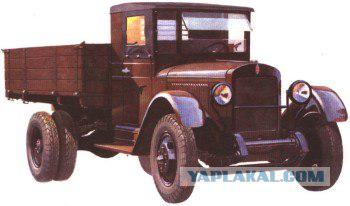
In 1931 after the reconstruction of the plant start-up and 1 October of that year, the plant was named after Joseph Stalin (VMS). October 25, 1931 was launched the first domestic car assembly conveyor, from which descended the first 27 AMO-3 truck.
It should be noted that the design of the AMO-3 is constantly modified and machinery AMO-3 latest releases externally (and to some extent "internally") did not differ from the ZIS-5.
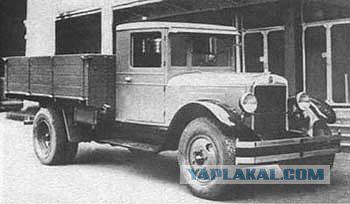
so also on the basis of the AMO-3 manufactured by index pasazhirssky bus AMO-4
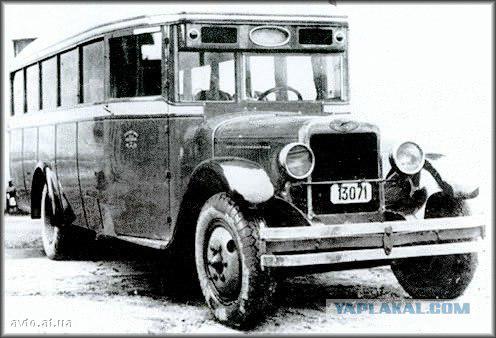
In 1934 it began the production of ZIS-5 and ZIS-6.
Truck ZIS-5 was a landmark model in the history of the plant, not only because it was the first truly mass car and stood in production for 15 years. On the basis of ZIS-5 was developed 25 types and modifications of vehicles, 19 of which have been put into production.
Produced since 1933 by the Moscow Automobile them. Joseph Stalin truck ZIS-5 before the war and during the war, widely used as a transport vehicle, prime mover, the base chassis for a variety of special-purpose machines.
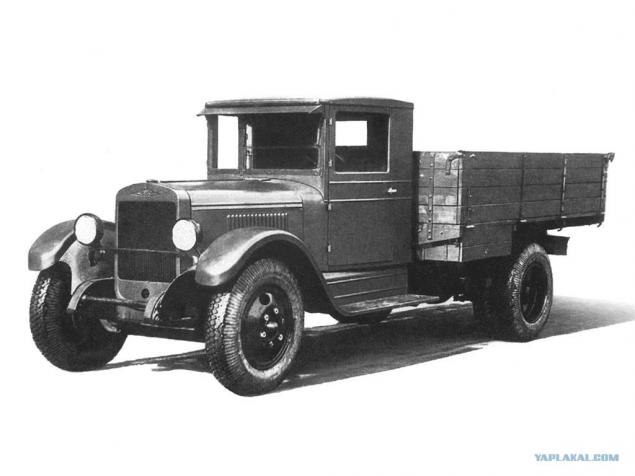
VMS 5 searchlight
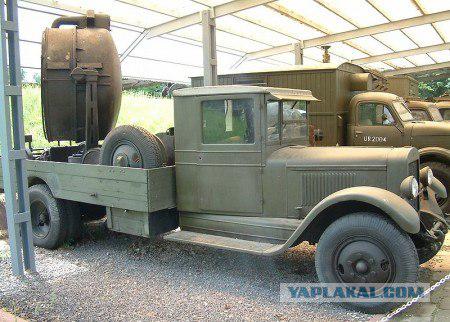
The three-axle truck ZIS-6 was put into production at the Moscow car factory. Joseph Stalin in 1934, soon after the development of this plant produce truck ZIS-5. This is no accident: in terms of design ZIS-6 is a three-axis version of the truck ZIS-5 and largely unified with him.
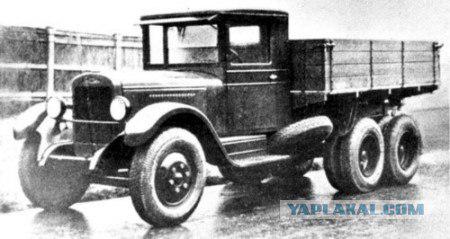
ZIS-6 rocket launchers all known by the name of "Katyusha»
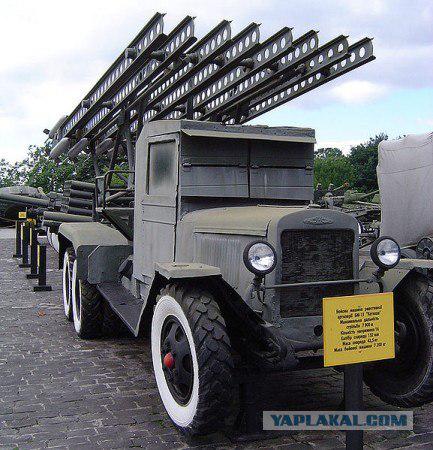
So it is based on the ZIS-6 issued BA-11
The armored car was developed as a means of strengthening bronebrigad units armed with light and medium armored vehicles, as well as to support the actions of infantry and cavalry. The basis for the creation of an armored car chassis was the shortened three-axle truck ZIS-6, are mass-produced by the Moscow plant them. AND IN. Stalin.
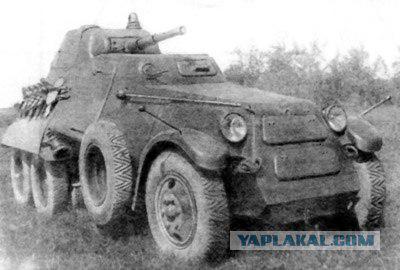
In 1936 (November 3) started the conveyor assembly of the first national seven-seater limousine ZIS-101, which became the basis for the design of the American car "Buick" in natural samples (without purchases from the company drawings).
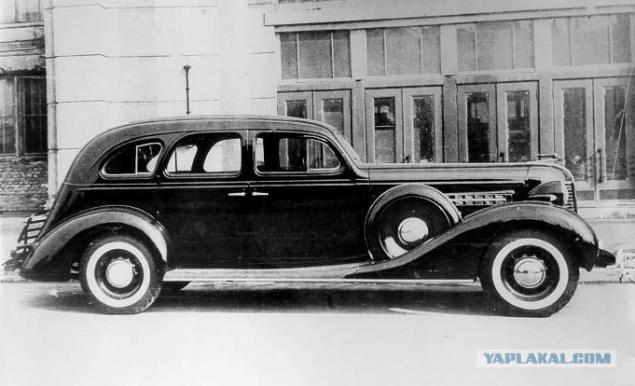
Later, a model ZIS-102
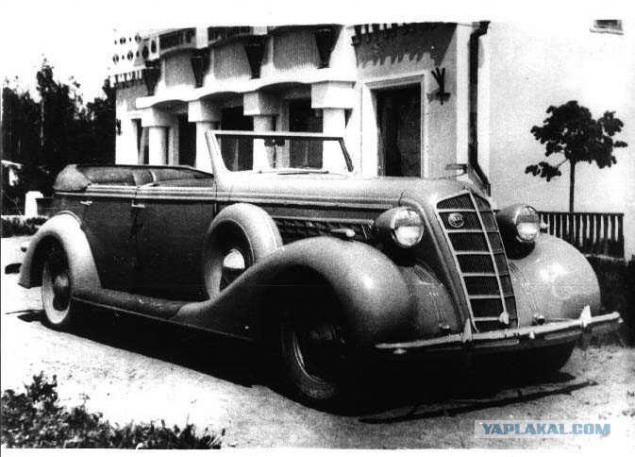
Very interesting model seemed to me that's the car.
In 1939, the Bureau of the pilot plant was developed by ZIS own Soviet sports car ZIS-101A-Sport, who was not only inspected but also approved by the country's leadership - IV Stalin!
In 1938, the Soviet motorsport, despite all the efforts and zeal, was in its infancy. Some experience has been, but it was not enough. And still not enough for the production of lightweight aluminum body parts, and special tires designed for a speed exceeding 150 km / h, as well as candles and carburetors did not exist. All production was limited to fast cars master of DIY and sport clubs. GAZ-GL1 Eugene Agitova prepared at the factory, even come close to the world level.
In the same 1938 KB pilot plant Plant named after Stalin worked three young men - Vladimir Kremenetskiy Nicholas Pullman and Anatoly Puhalin. Last just finished the evening department of the Moscow road and wrote a diploma on "fast cars". It was his submission Komsomol lit up the idea of creating a sports car.
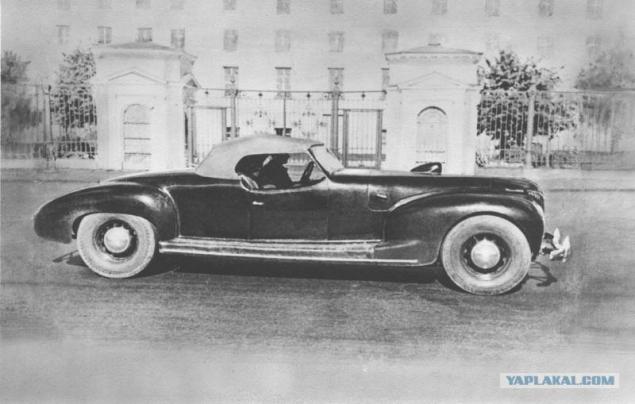
From 1936 to 1941. the plant has focused on increasing the output of a gas generator truck ZIS-21 half-track vehicles and ZIS-22, ZIS-42 and ZIS-8 bus and ZIS-16 (all on the basis of ZIS-5).
ZIS-21
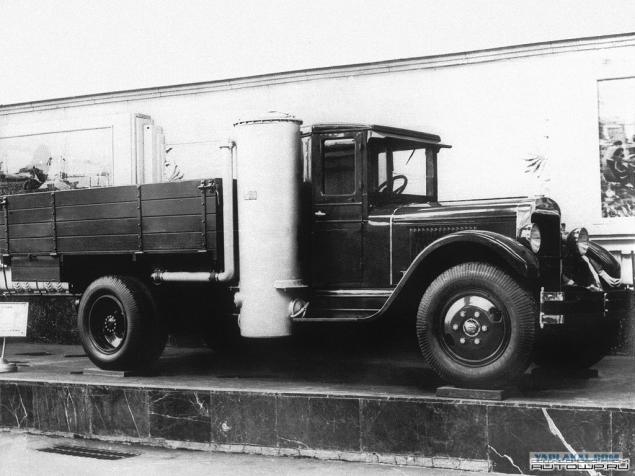
ZIS-22
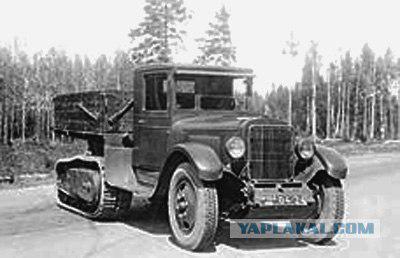
ZIS-42
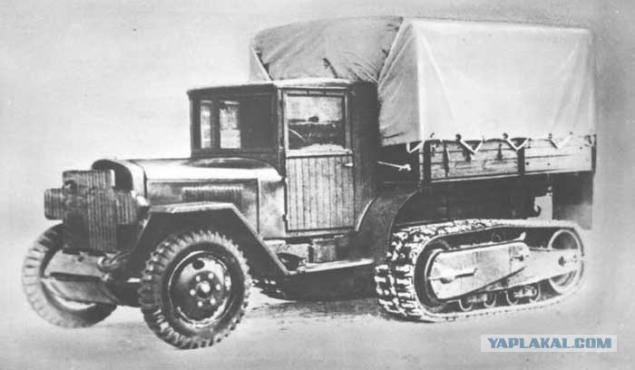
ZIS-8
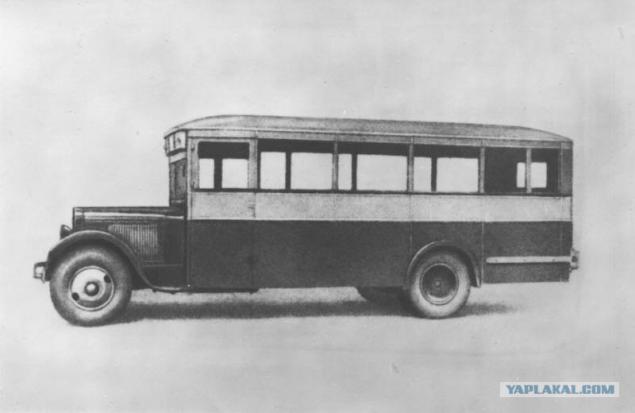
ZIS-16
Dobavleno1 in [mergetime] 1253886551 [/ mergetime]
German offensive against Moscow in autumn 1941 forced the evacuation of significant numbers of people and equipment in Ulyanovsk, Miass, Chelyabinsk and Shadrinsk. In October 1941, the plant was prepared for destruction and was not working. However, after the successful offensive of the Red Army near Moscow in the winter of 1941-1942. VMS gradually gaining momentum and in June 1942 began to descend from the conveyor military trucks ZIS-5B (simplified), semi-tracked tractors ZIS-22, ZIS-42 were produced weapons for the front (mortars, machine guns, mines, shells, etc.). During the war, it was made about 100 thousand trucks ZIS-5V, ZIS-42, ZIS-42M, sanitary bus ZIS-16C. Then in June 1942. VMS was first awarded the Order of Lenin for the excellent organization of the production of ammunition and weapons. The evacuated people and equipment have become the basis of plants: Ulyanovsk, Urals (Miass) automobile, Chelyabinsk forge-and-press and Shadrinsk Auto Aggregate.
In October 1944, the plant was awarded the Order of Red Banner of Labor.
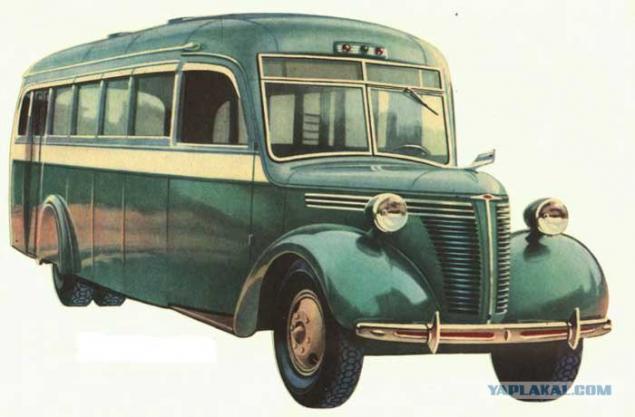
September 19, 1942, work began on creating a government limousine top-class VMS-110. High customer wanted a sample of the car to take a limousine company "Packard".
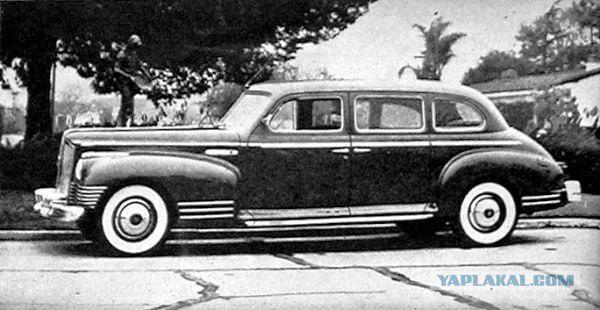
In 1946, he began the third reconstruction of the ZIS. It is intended for the production for the production of the first post-war production plant: Truck ZIS-150 (1947). And terrain trucks ZIS-151 (1948)..
In November 1949, the plant was awarded a second Order of Lenin for merits in development of the Soviet autostructure in connection with the 25th anniversary of Soviet vehicle.
ZIS-150
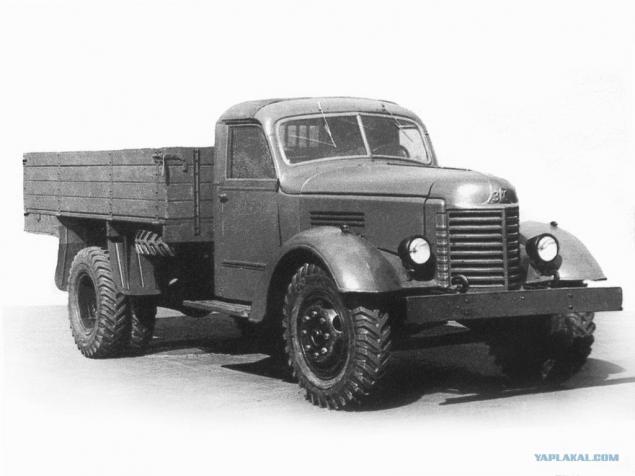
tanker truck on the basis of ZIS-150
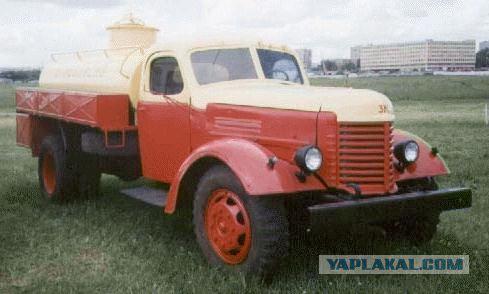
ZIS-151
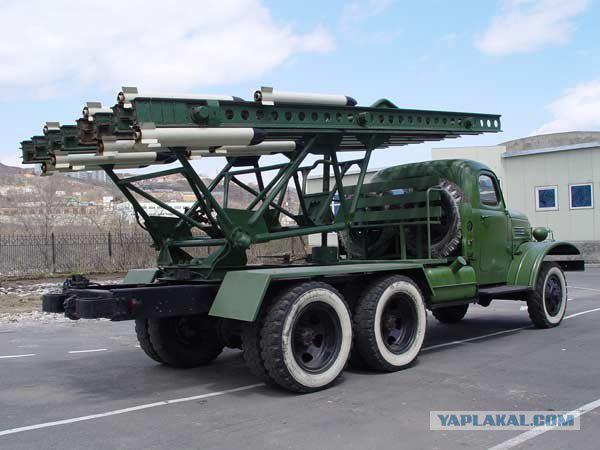
ZIS-151 option board
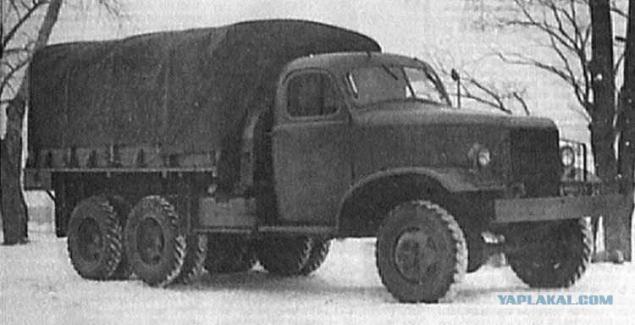
In 1949 replaced the city bus ZIS-154 came to the city bus ZIS-155. The bus was made on the basis of the basic units of the car ZIS-150 ZIS-154 bus.
ZIS-154
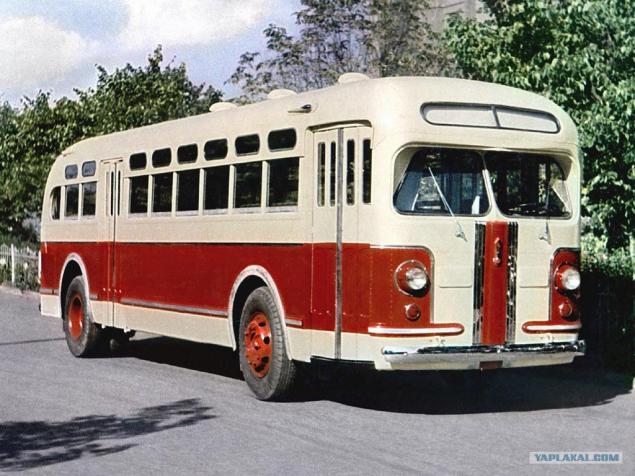
ZIS-155
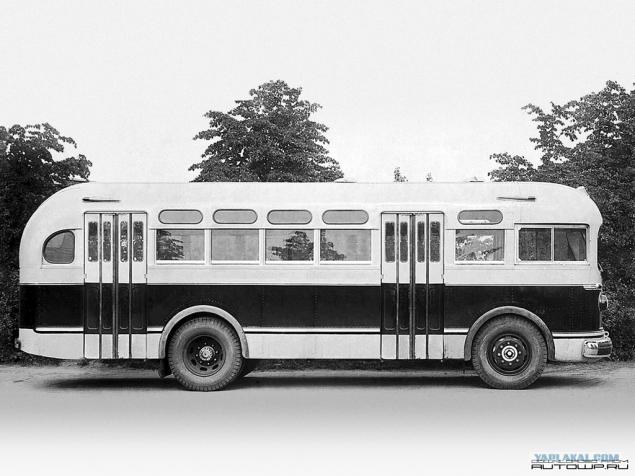
In 1950, the plant started production of defense equipment - ZIS-152 armored personnel carriers and amphibious vehicle ZIS-485 (1952-1958g.g.)
ZIS-152

ZIS-485
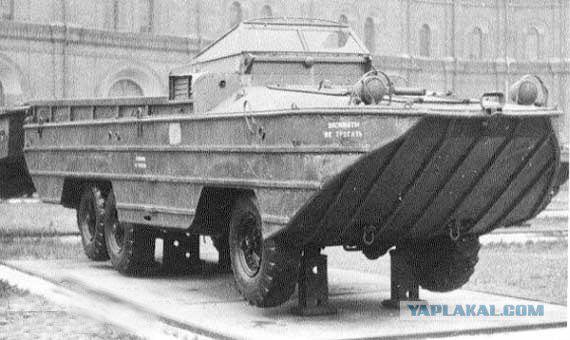
In 1955, production was put on the first domestic intercity bus ZIS-127.
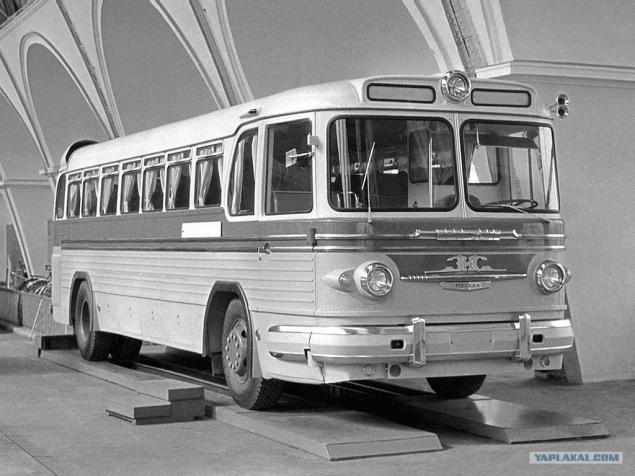
In 1956 dies Ivan Likhachev, and the plant is assigned a name. At the end of the same year it was collected for the first two prototypes of trucks of the second post-war generation - ZIL-130 and ZIL-131.
It was very interesting to see the first versions of the cabin is very bourgeois in appearance
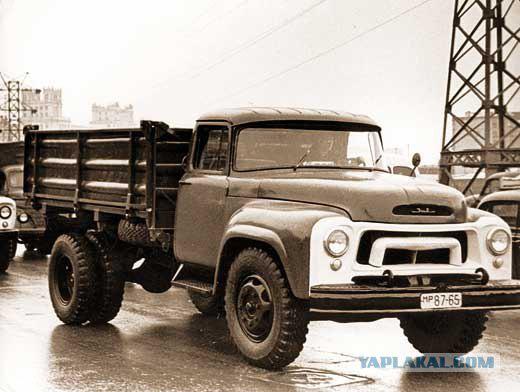
board option 130th
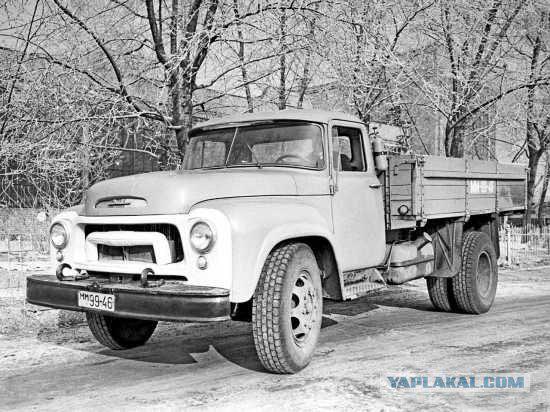
but so he could look like 131 minutes later the cab plumage replaced by a simpler
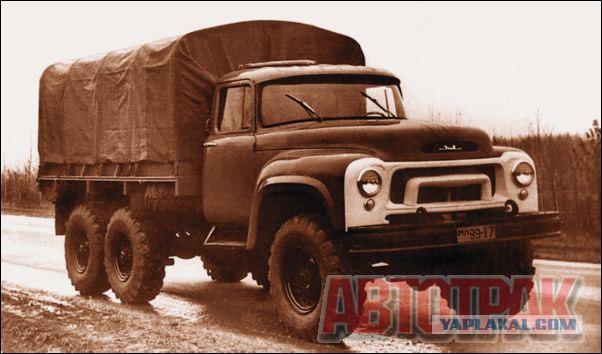
In 1957. ZIS-155 was replaced by a more comfortable city bus ZIL-158.
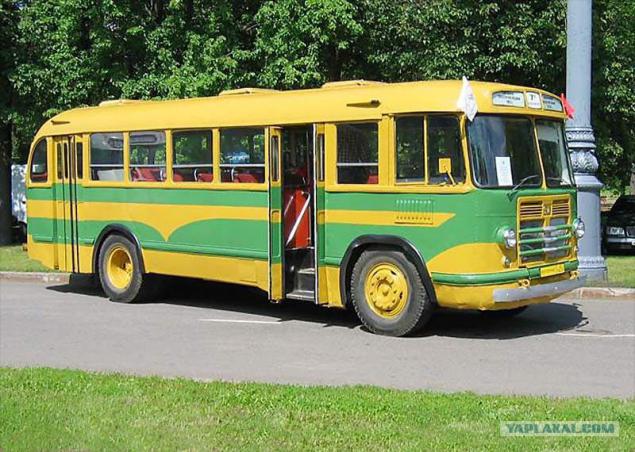
In 1957. I put on the production of ZIL-164, ZIL-164A instead of ZIS-150. By car was installed upgraded engine, the new rear axle with stamped beams.
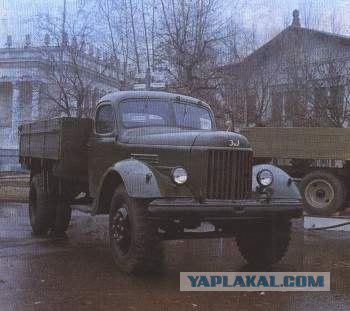
In 1958, instead of the ZIL-151 began to gather three-axle all-wheel drive vehicle ZIL-157. The car was equipped with a device for controlling the air pressure in the tires and wheels pent busbars.
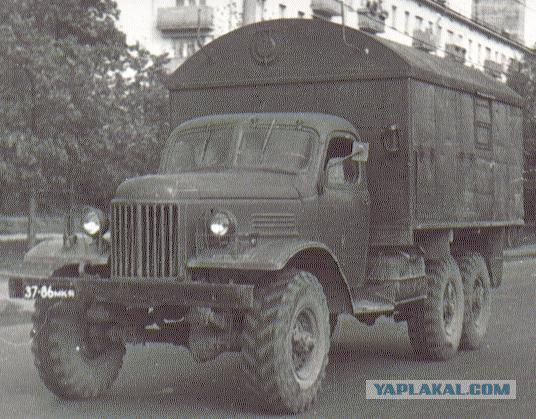
The line of cars after the car ZIS-110 was continued in 1958, a government limousine ZIL-111.
At the international exhibition in Brussels, honorary diploma awarded by a car. Subsequent cars: ZIL-114-117 (1967-1976 years), ZIL-4104-4105 (1976), until the last ZIL-41041 are considered as sufficiently stylish and modern.
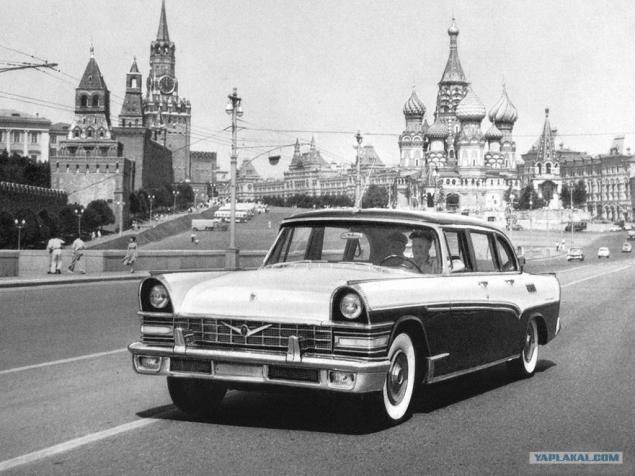
ZIL 114
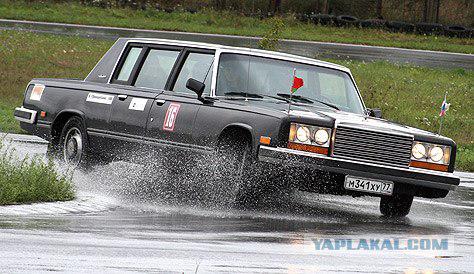
zil4104
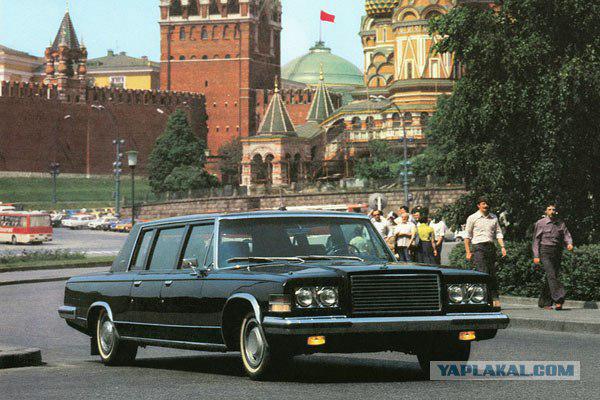
So as I want to dwell here in detail on this car
In 1967, the Soviet Union for the first time took part in the 8 International "Week of buses" in Nice, where the comfortable bus of small class "Youth" ZIL-118 won 12 prizes. The bus was made the piece for individual orders. Serial production of the bus failed to organize.
The idea of creating "Youth" was born in 1959 when the factory Likhachev sharply reduced release of representative limousines: the state order for "Khrushchev" ZIL 111, intended only for the country's leadership, painted in the next few years: 5-15 machines per year, while production preceding it "Stalinist" ZIS 110 thanks to the modifications of the taxi and "ambulance" has reached three hundred. This does not bode well for the elite units of the plant, which has incorporated the qualified personnel with experience in the production of high-end car nines. An increase in the issuance of units "of the eleventh-century" to solve many pressing issues. Here is a group of developers headed by Nikolai Grincharom and proposed to draft a comfortable mikroAWtobusa, based on units and aggregates ZIL 111, which is not met, however, a proper understanding of the leadership. However, the youth team at the beginning of 1960 started to work as if on a voluntary basis, and one day in December 1961 the first prototype mikroAWtobusa came running in the streets of Moscow.
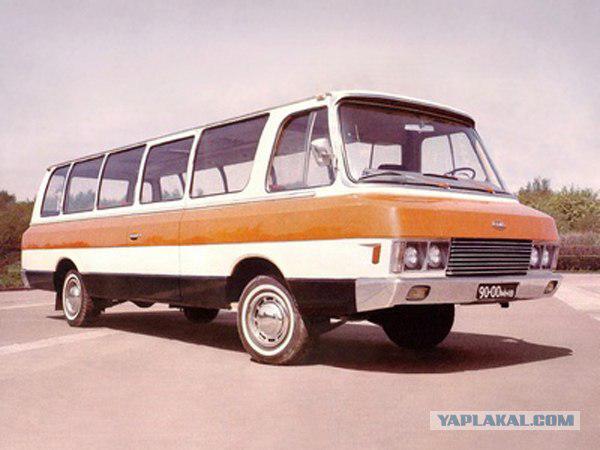
In 1964. started mass production of ZIL-130. Improving the design of truck ZIL-130 lasted until the end of 1970 and supplemented with such modifications as the northern, export, tropical, gas bottle, etc.
The first prototypes of the truck ZIL-130 appeared in 1958. After the reconstruction of the plant. Likhachev in late 1962 was released the first production batch of machines. A mass of production began in the fourth quarter of 1964.
At first, this vehicle was carrying capacity of 4 tons, but because he had a large margin of safety, already in 1965 it increased to 5 tons. And in 1977 we started production of an upgraded model - Zil-130-76. Outwardly it differed modified grille with low-mounted headlights and increased load capacity up to 6 tons.
Besides the standard truck ZIL-130, produced elongated version of the ZIL-130 and F-130 ZIL State with a base of 4500 and 5600 mm respectively. "Stotridtsaty" served as the base for dump trucks, tank trucks, mobile cranes, fire engines, etc. In Ukraine, Lutsk machine-building plant (later - LuAZ) in 1965 - 1979. on the chassis ZIL-130 produced refrigerated vans MILAC-890B. A Prilutsky plant "Pozhmashina" let fire tanker AC-30. It totals up to December 1994 the Moscow plant them. Likhachev released 3, 38 million. Truck ZIL-130 family.

board
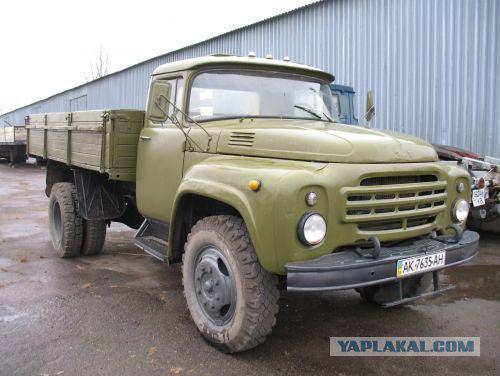
Construction worker
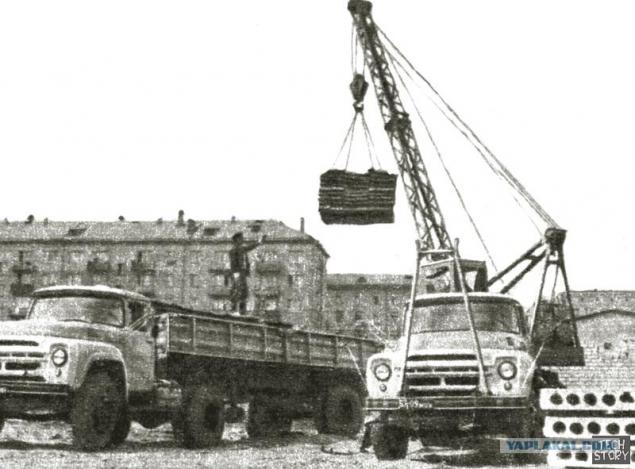
And of course we all remember the famous emergency gang Gorsvet
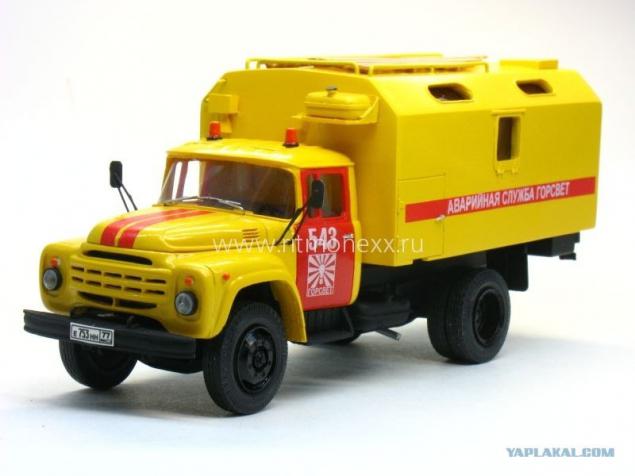
The category of all-wheel drive vehicles to the third generation is 3, 5-ton truck ZIL-131 (6x6), with a uniform series of "130" and are available from 1967 in connection with changes in the engine and chassis in 1987, the car assigned index ZIL 131N.
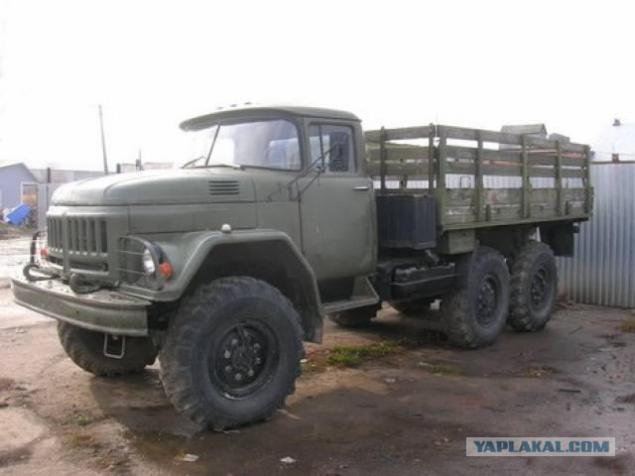
131 minutes with kung
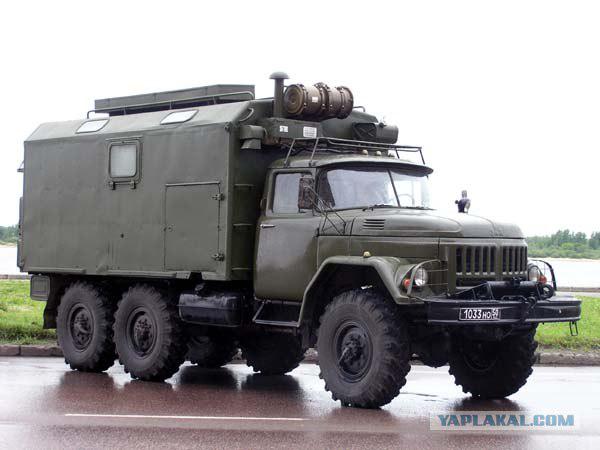
In 1967. have been designed and made (the piece) search and recovery unit (EMP-1) for search and evacuation reentry space objects and astronauts.
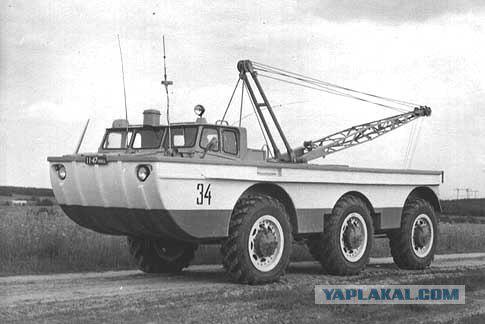
Pouchavstvovat ZIL and KAMAZ development
In the spring of 1968 by order of the Ministry of the automotive industry of the USSR in ZIL he was given the task to create a family of heavy-duty diesel truck three-axle tractor and preparation of production at the new location.
Already in May 1969 the first prototype ZIL-170 was the first test in the area of Uglich, Rybinsk. Then the Resolution of the Central Committee of the CPSU and the USSR Council of Ministers on the construction of complex plants for the production of a new family of trucks in the city of Naberezhnye Chelny. December 13, 1969 was taken out first bucket of earth on the construction of the Kama Automobile Plant
looked so one of the first examples of ZIL-170 truck sidelny based on the 170 th truck should be noted that some developments which have ZiL in peskapotnikov already.
like that looked like an alternative to the 130-th
ZIL 1964 E169A
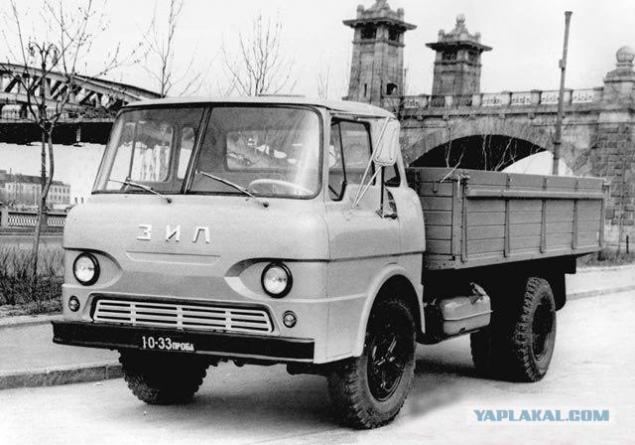
In 1975 on the ZIL began the production of a new generation of 3-axle ZIL-133G1 (6 × 4) carrying capacity of 8 tons, which in 1977 added a 10-ton model ZIL-133G2 GVW 17, 2 t.
Since 1979, instead of the ZIL-133G2 manufactured trucks ZIL-133GYA on which to fix the diesel engine KAMAZ-740 Kama Automobile Plant (210 hp), 10-speed gearbox, reinforced front springs.
ZIL-133G1
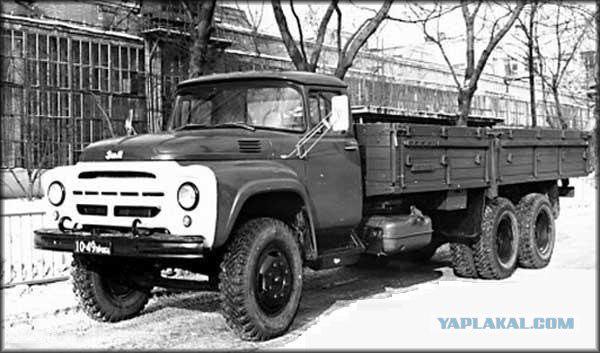
ZIL-133GYA
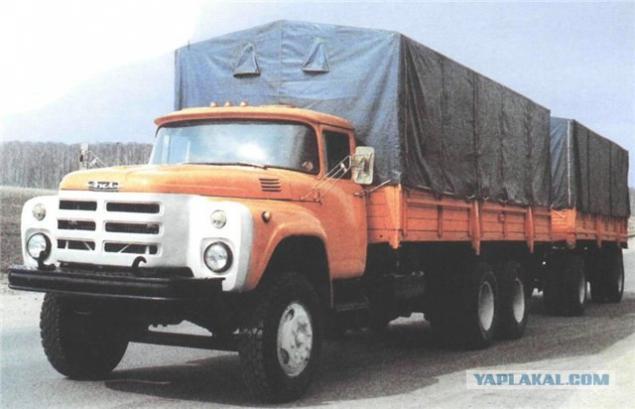
In the early 90-ies. previously classified production of special cross-country vehicles was reorganized into OJSC "GVA SUV." His name entered the initials of the creator of all terrain vehicles, VA Grachev. Most interesting are the rescue amphibian "Blue Bird". They are offered in cargo and passenger versions ZIL-4906 and ZIL-49061 (6x6) with petrol or diesel engines 136-185 hp, board 10-speed transmission, independent torsion bar suspension, disk brakes, fiberglass body, equipped with radio navigation instruments and means of salvation.
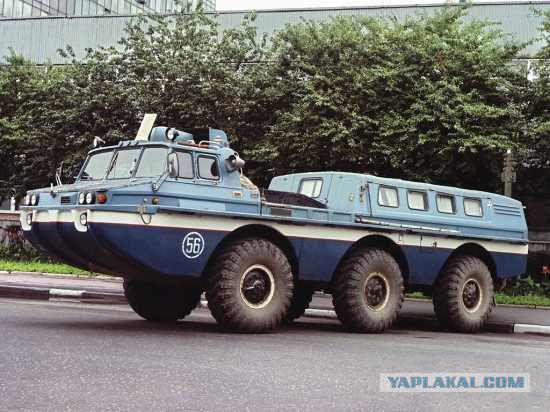
In December 1991, the Soviet Union collapsed and torn perennial intra-Community links. The new conditions of the adjustment period, the loss of important markets failures in cooperation relations and the actual receipt of the termination of military orders made ZIL radically to review their policies and start to adapt to the market principles of farming. For the first time this has led to a sharp drop in demand for all production trucks and put the plant on the brink of bankruptcy. At the same time we began an active search for a way out of the situation, as a result of which the entire production program was revised and expanded. It was promoted and competition from foreign firms, which previously ZIL never experienced.
Source:
pysy lope will bukaf and pictures do not know why I finish unsubscribe

August 2 (July 20, old style) 1916 in Tyufelevoy Grove held a solemn prayer and laying Automobile Plant (AMO), which in March 1917 was to release 150 half tons lorries "F-15" under the license of Italian company "Fiat" . Plant based trading house "Kuznetsov Ryabushinskys and K". The difficulties of wartime and weakness lathe instrumental bases of the country foiled the plans of construction of the plant on schedule. However, Ryabushinskys purchased in Italy complete sets of cars "F-15", which provided the assembly of 432 trucks in 1917, 779 - in 1918 and 108 cars - in 1919. However, the factory for the manufacture and assembly of own cars completed was not. The reason for that became the October Revolution and the Civil War. The nationalization of the unfinished plant (August 15, 1918) recorded the expropriation of the property of AMO shareholders. The unfinished enterprise essentially turned into a large workshops where cars and other equipment.
April 30, 1923 AMO was named after Italian communist Ferrero, killed by fascists. In June 1923 the State Planning Committee of the USSR approved the production target plant for 1923 - 1927. However, in March 1924, the plant received a specific governmental task for manufacturing of the first Soviet truck.
November 1, 1924 was assembled the first half tons lorries AMO-F-15, and 7noyabrya ten cars took part in the parade. This date is considered the birthday of the Soviet automobile industry.

I note that the equipment for the manufacture of high-grade car almost was not therefore in the production of the first Soviet car had quite perverted. Many of the operations performed manually repair technology. For example, the first drilled in a steel plate and chisel cut down something like the crankshaft, and then with the big tricks to grind the workpiece on a lathe, turning it into a finished product.

As seen from the images, based on the AMO-F-15 was based a lot of cars with a base experimented been here such options such
AMO-F15 - PT-10

and even here are
AMO-F15 - PT-12

also on the basis of this car produced armored car BA-27

In 1925 the plant was renamed the 1 st State Automobile Plant (the former AMO).
At the beginning of 1927. Avtotrest, who reports to the plant, decided to reconstruct the plant. The object of the production truck was selected the American car assembling firm "Autocar" carrying capacity of 2, 5 m. This planned mass production of trucks in a pipelined manner.
This is the first domestic car with hydraulic brakes, diaphragm petrol pump, battery and ignition system driven by the transmission pump to inflate tires.
AMS-2 was the same type with the American truck "Autocar-5A", and before the end of 1931, it used a number of imported components and assemblies.
In 1927 the plant was headed I.A.Lihachev, whose name is associated with the intensive development of the company.

In 1931 after the reconstruction of the plant start-up and 1 October of that year, the plant was named after Joseph Stalin (VMS). October 25, 1931 was launched the first domestic car assembly conveyor, from which descended the first 27 AMO-3 truck.
It should be noted that the design of the AMO-3 is constantly modified and machinery AMO-3 latest releases externally (and to some extent "internally") did not differ from the ZIS-5.

so also on the basis of the AMO-3 manufactured by index pasazhirssky bus AMO-4

In 1934 it began the production of ZIS-5 and ZIS-6.
Truck ZIS-5 was a landmark model in the history of the plant, not only because it was the first truly mass car and stood in production for 15 years. On the basis of ZIS-5 was developed 25 types and modifications of vehicles, 19 of which have been put into production.
Produced since 1933 by the Moscow Automobile them. Joseph Stalin truck ZIS-5 before the war and during the war, widely used as a transport vehicle, prime mover, the base chassis for a variety of special-purpose machines.

VMS 5 searchlight

The three-axle truck ZIS-6 was put into production at the Moscow car factory. Joseph Stalin in 1934, soon after the development of this plant produce truck ZIS-5. This is no accident: in terms of design ZIS-6 is a three-axis version of the truck ZIS-5 and largely unified with him.

ZIS-6 rocket launchers all known by the name of "Katyusha»

So it is based on the ZIS-6 issued BA-11
The armored car was developed as a means of strengthening bronebrigad units armed with light and medium armored vehicles, as well as to support the actions of infantry and cavalry. The basis for the creation of an armored car chassis was the shortened three-axle truck ZIS-6, are mass-produced by the Moscow plant them. AND IN. Stalin.

In 1936 (November 3) started the conveyor assembly of the first national seven-seater limousine ZIS-101, which became the basis for the design of the American car "Buick" in natural samples (without purchases from the company drawings).

Later, a model ZIS-102

Very interesting model seemed to me that's the car.
In 1939, the Bureau of the pilot plant was developed by ZIS own Soviet sports car ZIS-101A-Sport, who was not only inspected but also approved by the country's leadership - IV Stalin!
In 1938, the Soviet motorsport, despite all the efforts and zeal, was in its infancy. Some experience has been, but it was not enough. And still not enough for the production of lightweight aluminum body parts, and special tires designed for a speed exceeding 150 km / h, as well as candles and carburetors did not exist. All production was limited to fast cars master of DIY and sport clubs. GAZ-GL1 Eugene Agitova prepared at the factory, even come close to the world level.
In the same 1938 KB pilot plant Plant named after Stalin worked three young men - Vladimir Kremenetskiy Nicholas Pullman and Anatoly Puhalin. Last just finished the evening department of the Moscow road and wrote a diploma on "fast cars". It was his submission Komsomol lit up the idea of creating a sports car.

From 1936 to 1941. the plant has focused on increasing the output of a gas generator truck ZIS-21 half-track vehicles and ZIS-22, ZIS-42 and ZIS-8 bus and ZIS-16 (all on the basis of ZIS-5).
ZIS-21

ZIS-22

ZIS-42

ZIS-8

ZIS-16
Dobavleno1 in [mergetime] 1253886551 [/ mergetime]
German offensive against Moscow in autumn 1941 forced the evacuation of significant numbers of people and equipment in Ulyanovsk, Miass, Chelyabinsk and Shadrinsk. In October 1941, the plant was prepared for destruction and was not working. However, after the successful offensive of the Red Army near Moscow in the winter of 1941-1942. VMS gradually gaining momentum and in June 1942 began to descend from the conveyor military trucks ZIS-5B (simplified), semi-tracked tractors ZIS-22, ZIS-42 were produced weapons for the front (mortars, machine guns, mines, shells, etc.). During the war, it was made about 100 thousand trucks ZIS-5V, ZIS-42, ZIS-42M, sanitary bus ZIS-16C. Then in June 1942. VMS was first awarded the Order of Lenin for the excellent organization of the production of ammunition and weapons. The evacuated people and equipment have become the basis of plants: Ulyanovsk, Urals (Miass) automobile, Chelyabinsk forge-and-press and Shadrinsk Auto Aggregate.
In October 1944, the plant was awarded the Order of Red Banner of Labor.

September 19, 1942, work began on creating a government limousine top-class VMS-110. High customer wanted a sample of the car to take a limousine company "Packard".

In 1946, he began the third reconstruction of the ZIS. It is intended for the production for the production of the first post-war production plant: Truck ZIS-150 (1947). And terrain trucks ZIS-151 (1948)..
In November 1949, the plant was awarded a second Order of Lenin for merits in development of the Soviet autostructure in connection with the 25th anniversary of Soviet vehicle.
ZIS-150

tanker truck on the basis of ZIS-150

ZIS-151

ZIS-151 option board

In 1949 replaced the city bus ZIS-154 came to the city bus ZIS-155. The bus was made on the basis of the basic units of the car ZIS-150 ZIS-154 bus.
ZIS-154

ZIS-155

In 1950, the plant started production of defense equipment - ZIS-152 armored personnel carriers and amphibious vehicle ZIS-485 (1952-1958g.g.)
ZIS-152

ZIS-485

In 1955, production was put on the first domestic intercity bus ZIS-127.

In 1956 dies Ivan Likhachev, and the plant is assigned a name. At the end of the same year it was collected for the first two prototypes of trucks of the second post-war generation - ZIL-130 and ZIL-131.
It was very interesting to see the first versions of the cabin is very bourgeois in appearance

board option 130th

but so he could look like 131 minutes later the cab plumage replaced by a simpler

In 1957. ZIS-155 was replaced by a more comfortable city bus ZIL-158.

In 1957. I put on the production of ZIL-164, ZIL-164A instead of ZIS-150. By car was installed upgraded engine, the new rear axle with stamped beams.

In 1958, instead of the ZIL-151 began to gather three-axle all-wheel drive vehicle ZIL-157. The car was equipped with a device for controlling the air pressure in the tires and wheels pent busbars.

The line of cars after the car ZIS-110 was continued in 1958, a government limousine ZIL-111.
At the international exhibition in Brussels, honorary diploma awarded by a car. Subsequent cars: ZIL-114-117 (1967-1976 years), ZIL-4104-4105 (1976), until the last ZIL-41041 are considered as sufficiently stylish and modern.

ZIL 114

zil4104

So as I want to dwell here in detail on this car
In 1967, the Soviet Union for the first time took part in the 8 International "Week of buses" in Nice, where the comfortable bus of small class "Youth" ZIL-118 won 12 prizes. The bus was made the piece for individual orders. Serial production of the bus failed to organize.
The idea of creating "Youth" was born in 1959 when the factory Likhachev sharply reduced release of representative limousines: the state order for "Khrushchev" ZIL 111, intended only for the country's leadership, painted in the next few years: 5-15 machines per year, while production preceding it "Stalinist" ZIS 110 thanks to the modifications of the taxi and "ambulance" has reached three hundred. This does not bode well for the elite units of the plant, which has incorporated the qualified personnel with experience in the production of high-end car nines. An increase in the issuance of units "of the eleventh-century" to solve many pressing issues. Here is a group of developers headed by Nikolai Grincharom and proposed to draft a comfortable mikroAWtobusa, based on units and aggregates ZIL 111, which is not met, however, a proper understanding of the leadership. However, the youth team at the beginning of 1960 started to work as if on a voluntary basis, and one day in December 1961 the first prototype mikroAWtobusa came running in the streets of Moscow.

In 1964. started mass production of ZIL-130. Improving the design of truck ZIL-130 lasted until the end of 1970 and supplemented with such modifications as the northern, export, tropical, gas bottle, etc.
The first prototypes of the truck ZIL-130 appeared in 1958. After the reconstruction of the plant. Likhachev in late 1962 was released the first production batch of machines. A mass of production began in the fourth quarter of 1964.
At first, this vehicle was carrying capacity of 4 tons, but because he had a large margin of safety, already in 1965 it increased to 5 tons. And in 1977 we started production of an upgraded model - Zil-130-76. Outwardly it differed modified grille with low-mounted headlights and increased load capacity up to 6 tons.
Besides the standard truck ZIL-130, produced elongated version of the ZIL-130 and F-130 ZIL State with a base of 4500 and 5600 mm respectively. "Stotridtsaty" served as the base for dump trucks, tank trucks, mobile cranes, fire engines, etc. In Ukraine, Lutsk machine-building plant (later - LuAZ) in 1965 - 1979. on the chassis ZIL-130 produced refrigerated vans MILAC-890B. A Prilutsky plant "Pozhmashina" let fire tanker AC-30. It totals up to December 1994 the Moscow plant them. Likhachev released 3, 38 million. Truck ZIL-130 family.

board

Construction worker

And of course we all remember the famous emergency gang Gorsvet

The category of all-wheel drive vehicles to the third generation is 3, 5-ton truck ZIL-131 (6x6), with a uniform series of "130" and are available from 1967 in connection with changes in the engine and chassis in 1987, the car assigned index ZIL 131N.

131 minutes with kung

In 1967. have been designed and made (the piece) search and recovery unit (EMP-1) for search and evacuation reentry space objects and astronauts.

Pouchavstvovat ZIL and KAMAZ development
In the spring of 1968 by order of the Ministry of the automotive industry of the USSR in ZIL he was given the task to create a family of heavy-duty diesel truck three-axle tractor and preparation of production at the new location.
Already in May 1969 the first prototype ZIL-170 was the first test in the area of Uglich, Rybinsk. Then the Resolution of the Central Committee of the CPSU and the USSR Council of Ministers on the construction of complex plants for the production of a new family of trucks in the city of Naberezhnye Chelny. December 13, 1969 was taken out first bucket of earth on the construction of the Kama Automobile Plant
looked so one of the first examples of ZIL-170 truck sidelny based on the 170 th truck should be noted that some developments which have ZiL in peskapotnikov already.
like that looked like an alternative to the 130-th
ZIL 1964 E169A

In 1975 on the ZIL began the production of a new generation of 3-axle ZIL-133G1 (6 × 4) carrying capacity of 8 tons, which in 1977 added a 10-ton model ZIL-133G2 GVW 17, 2 t.
Since 1979, instead of the ZIL-133G2 manufactured trucks ZIL-133GYA on which to fix the diesel engine KAMAZ-740 Kama Automobile Plant (210 hp), 10-speed gearbox, reinforced front springs.
ZIL-133G1

ZIL-133GYA

In the early 90-ies. previously classified production of special cross-country vehicles was reorganized into OJSC "GVA SUV." His name entered the initials of the creator of all terrain vehicles, VA Grachev. Most interesting are the rescue amphibian "Blue Bird". They are offered in cargo and passenger versions ZIL-4906 and ZIL-49061 (6x6) with petrol or diesel engines 136-185 hp, board 10-speed transmission, independent torsion bar suspension, disk brakes, fiberglass body, equipped with radio navigation instruments and means of salvation.

In December 1991, the Soviet Union collapsed and torn perennial intra-Community links. The new conditions of the adjustment period, the loss of important markets failures in cooperation relations and the actual receipt of the termination of military orders made ZIL radically to review their policies and start to adapt to the market principles of farming. For the first time this has led to a sharp drop in demand for all production trucks and put the plant on the brink of bankruptcy. At the same time we began an active search for a way out of the situation, as a result of which the entire production program was revised and expanded. It was promoted and competition from foreign firms, which previously ZIL never experienced.
Source:




